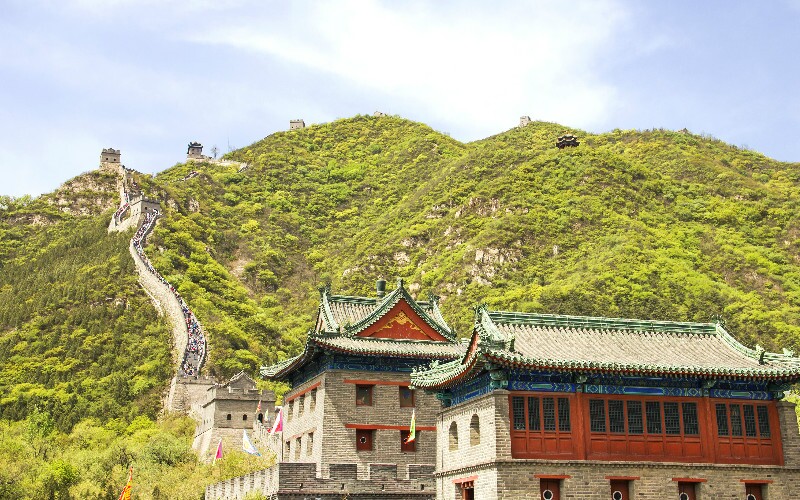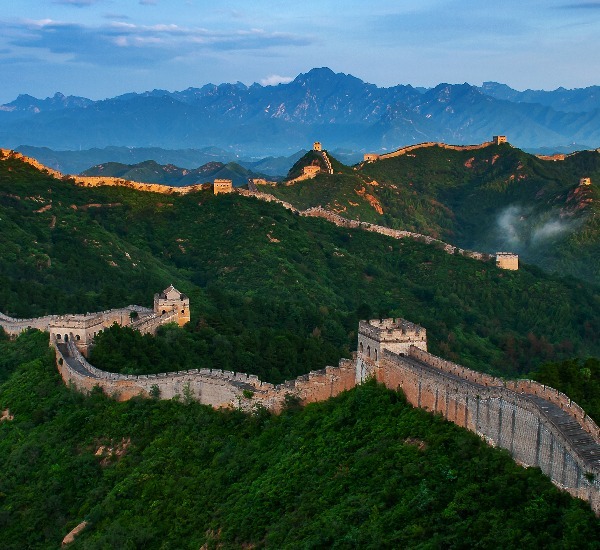The Great Wall of the Northern Qi Dynasty (550–577) was built during the Northern and Southern Dynasties era for the purpose of consolidating the northern frontiers and the Northern Zhou Dynasty) border in the west.
The Great Wall was built and repaired in six dynasties. The Great Wall construction of the Northern Qi Dynasty was the third time after the Qin Dynasty and the Han Dynasty.
About the Northern Qi Dynasty (550–577 AD)
During the Southern and Northern Dynasties era (420–589), the first emperor of the Northern Qi Dynasty was Gaoyang (529–559), who reigned till his death. The capital was Yecheng City (today's Lingzhang in Hebei Province). This brief dynasty was defeated and replaced by its main enemy, the Northern Zhou Dynasty (557–581).

When and Where the Northern Qi Great Wall Was Built
In 552 AD, the Great Wall was built at the northwest border of Qi, starting from northwest Lishi (离石) County in today's south Shanxi Province and expanding towards west Shuo County (朔县 Shuòxiàn) in the north of Shanxi, with a total length of over 400 kilometers.
In 555 AD, Emperor Qiwen commanded that the Great Wall be built at the northern border on a large scale. This was an addition to and repairs of the already existing Great Wall section of the Northern Wei Dynasty (368–535).
In 556 AD, Emperor Qiwen continued to build the Great Wall based on what had been accomplished in 552 AD and 555 AD, and expanded the newly built Great Wall to the east until it reached Shanhai Pass, with a total length of more than 3,000 kilometers. There was a garrison every 10 kilometers, and 25 fort towns in places of importance.
In 557 AD, the second line of defense on the inside of the Great Wall was built. The Great Wall started from old garrisons in the east of Pianguan (偏关) County in Shanxi Province, passing Yanmen Pass, Pingxing (平型) Pass, and continuing to Xiaguan (下关) in Shanxi Province.
In 563 AD, Emperor Wucheng (537–569 AD) built a section of the Great Wall along the Taihang Mountains on the border of Shanxi and Hebei provinces, which can be seen today on top of the Taihang Mountains. Parts of the Great Wall offering better views include the east of Longquan (龙泉) Pass in Hebei Province to the east of Xiakou (下口) Town, Jianping (建平) County in Hebei. Other sections are gone completely, with the exception of some relics at the passes.
In 565 AD, the original Great Wall sections of the Eastern Wei Dynasty (534–550) were extended to Yanmen Pass, and the sections built during 557 AD were repaired.
- 2-Day Great Wall Mutianyu-Simatai Day-Night Tour
- 1-Day Jinshanling Great Wall Hiking Tour
- 2-Day Huanghuacheng Lakeside Great Wall Hiking and Camping Tour
Northern Qi Great Wall Relics Sites
Great Wall Sections Built in Xinzhou (忻州), Shanxi
The Great Wall near northwest Lishi was built from Huangluling (黄栌岭) north to Sheping (社平) Garrison in Wuzhai (五寨) County. Thirty-six forts were built in the area to accompany a wall of over 400 kilometers. It was later extended to Laoniuwan (老牛湾 'Old Cow Cove').
A 25-km remaining section of the Northern Qi Dynasty Great Wall is at Laoyingnan (老营南) in Pianguan County, divided by Xinzhuangzi (新庄子) Village. Stretching from the southeast, it twists and turns until it meets the Ming Dynasty Great Wall section south of Beichang Village.
The Xinzhou Great Wall sections were built to defend against the Jihu (a branch of the Xiongnu Mongol league), the Western Wei Dynasty (535–557), and later the Northern Zhou Dynasty (557–581).
The rest of the Xinzhou Great Wall sections were covered by construction carried out during the Ming Dynasty, with few areas still being exposed.
The Inner Great Wall
In order to strengthen defenses, the Northern Qi Dynasty built another layer of wall inside the Great Wall in 558 AD, from the Qingshui River in Zhongyang County, via Ningwu Pass, Yanmen Pass, and Pingxing Pass, to Xiaguan in Hebei. Later, it was extended to Juyong Pass, converging with the outer Great Wall sections.
The Simatai Section of the Great Wall
The Simatai section of the Great Wall was first built during the Northern Qi Dynasty in 550, and was repaired during Emperor Wanli's reign in the Ming Dynasty in 1573. The N. Qi remains are on a shady hill opposite Houchuankou (后川口), where the Jinshanling and Simatai Great Wall sections meet.
It is the only Northern Qi Dynasty Great Wall section north of Beijing remaining. The rest is now hidden under the Ming Dynasty Great Wall sections.
- 1-Day Beijing Layover Tour
- 1-Day Jiankou to Mutianyu Great Wall Hiking Tour
- 5-Day Huangyaguan to Huanghuacheng Great Wall Hiking Tour
Visit Simatai With China Highlights
Most tour companies won't take you to see the Northern Qi Great Wall if you go to Simatai or Jinshanling (we don't usually either), or even know about it. With China Highlights you can tailor your tour so that you see what you want to.
Further Reading
- Most Popular Great Wall Sections: Which One to Visit
- Who Built the Great Wall of China?
- The Great Wall of the Ming Dynasty









